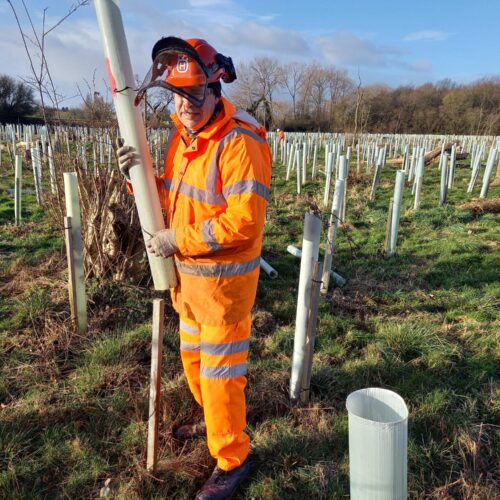Whilst the survey season is slowly coming to an end as wildlife begins to hibernate, the contracting season for Thomson Habitats continues, particularly for planting schemes.
Winter is the perfect time to carry out large-scale landscaping and habitat enhancement schemes. Plants effectively become dormant so there is a reduced level of competition.
For winter planting schemes we recommend the use of bare root plants. Bare root plants are so called, because growers dig the plants whilst dormant, wash the soil from the roots, and surround the roots in moist packing material prior to shipping.
The bare root season starts from the middle of November and continues all the way through to the end of March.
Bare root plants are great for gapping up hedgerows, planting hedgerows from scratch, woodland enhancements or large-scale planting schemes.
Our recommendation for bare root planting is for several reasons:
- Planting with bare root plants is extremely cost effective. The unit cost per plant is very economical, and the smaller size of the plant means that it can be easily planted, saving time.
- Bare root plant stock is very resilient, with smaller plants establishing more readily. This means less maintenance is required.
When using bare root plants, or carrying out any other form of planting, we have the following top tips:
- Ensure that the proposed area for planting has been properly prepared and is free from weeds, stones and roots. Ideally, you want loose friable soil that isn’t too wet and isn’t too dry.
- Don’t let your bare root plants dry out! If you are not going to plant them immediately, then find a temporary nursery area and heel them into the ground.
- Where possible, use slow release fertilizer and mulch. This will help significantly to reduce plant mortality and aid in establishing healthy growth.
- Don’t plant in waterlogged or frozen soil.
- Test the soil pH before planting. Plants have different pH tolerances, so make sure that you’re aware of this before specifying plants for your scheme.











